Our Blog - Olive Festival in Mouriès - Day 1
This blog is all about an Olive Festival ... specifically, a Cracked Green Olive festival. Mouriès is a small, picturesque village surrounded by little hills and fields of olive trees at the foot of the Alpilles, at the heart of the Vallée des Baux. The culture of Mouriès is rooted in its tradition of olive oil production and the village is proud to be France’s premier oil-producing municipality, with 80,000 olive trees!! It is manufactured using traditional methods, cold and unfiltered, giving it that special flavor. Around 1900, there were 11 oil mills in Mouriès. The September festival celebrates Olive Cassée, crisp bright-green early olives that have their skin lightly cracked to release any bitterness before they are immersed in fennel-flavored brine. More on the olives on Days 2 and 3.
We drove there and took the "quick" way just as far as an Abbey. Along the way, we went through a couple areas that were interesting, and we picked up just a couple pictures.
As we went by Carcassonne, you could see the medieval city up on the hill in the distance. While we didn't stop, we did visit back in 2010 and we have some pictures on our Carcassonne blog from back then. I think we are going to have to visit again for a couple reasons: first is that it was freezing cold last time we were there and there were a lot of things closed .. and second is that looking at the pictures, we didn't take enough!!!
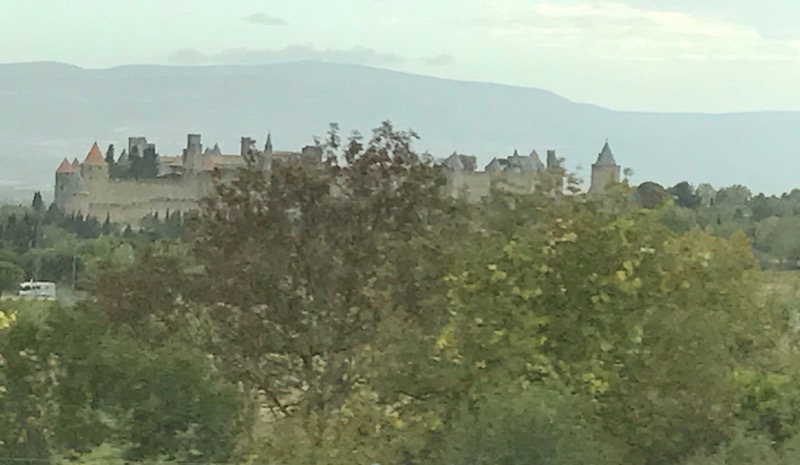
Then we headed through an area with these nice mountains.
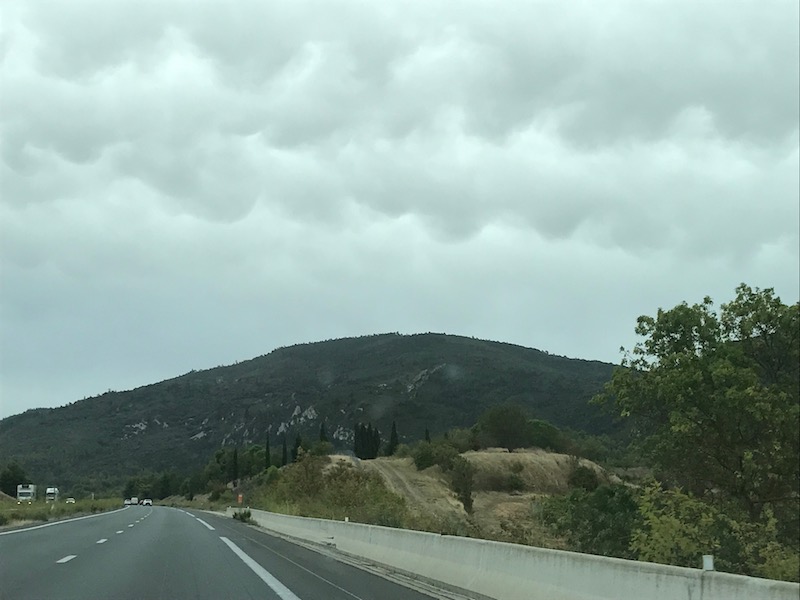



And then a wind farm ... this is probably as close as I have ever been to one of the actual wine turbines. There are actually quite a few wind farms around, since we saw 3 of them just on our trip. In France, a 10 MW wind farm (around three to five turbines) produces enough electricity each year for the domestic needs of around 9,000 people (according to Électricité de France). In 2015, France was the 8th largest wind power national by installed capacity.

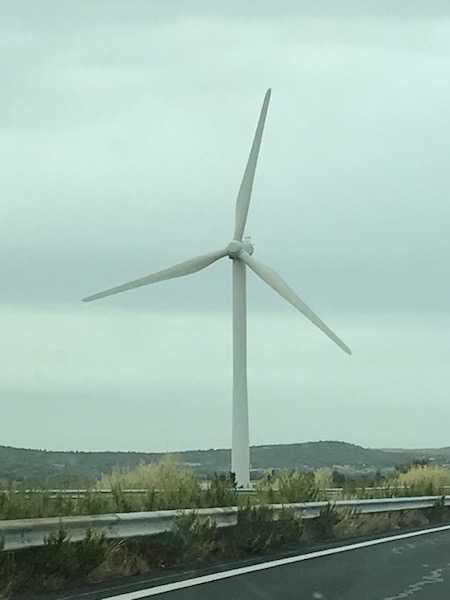
Our first stop was the Abbey of Montmajour. The original abbey, the Abbey of Saint Peter, was founded here by Benedictine monks in 948. It had been updated and expanded through several different centuries, which is very apparent in looking at the different styles. Interesting trivia ... until the late Middle Ages, Montmajour was an island protected by marshes and only accessible by boat. Here you can start seeing just how massive the Abbey is, and you can also start seeing some of the different styles, like the more "castle" looking tower at the left-rear. To tell you the truth, I don't think it is that "pretty" from the outside.

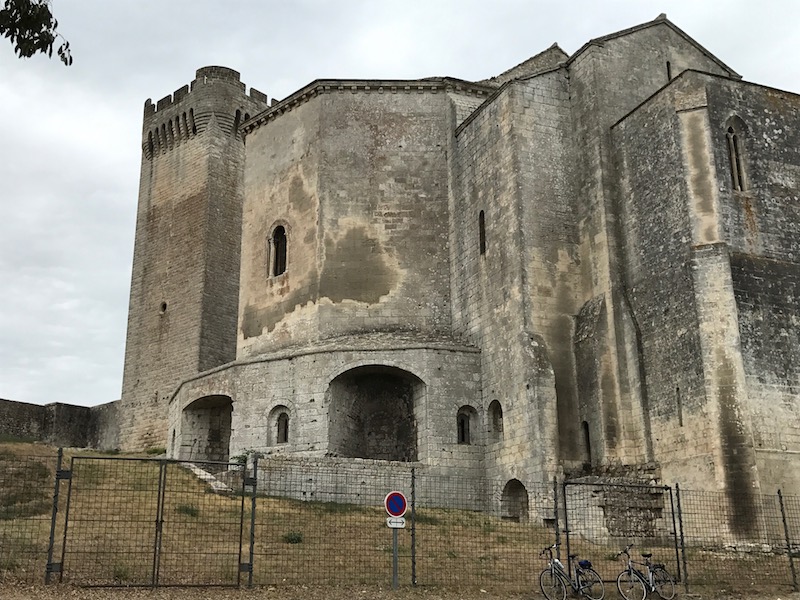

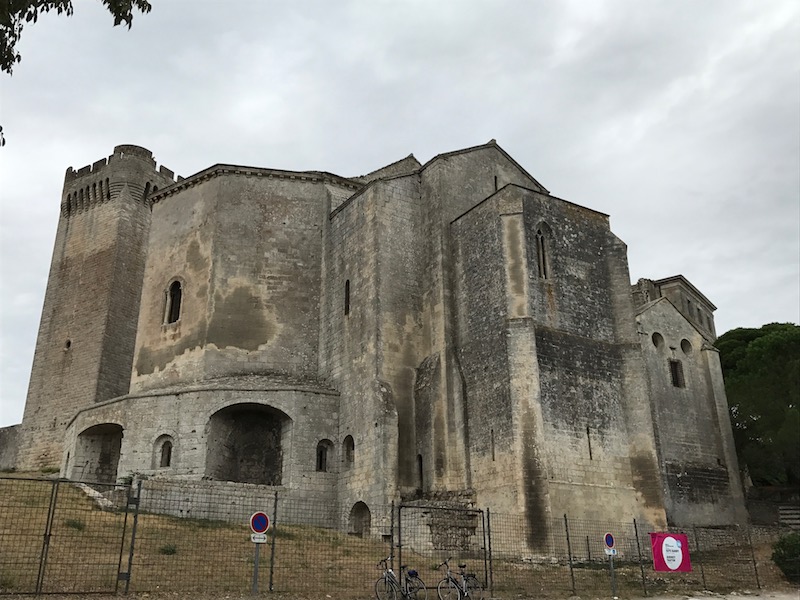
First stop on the tour was to the Crypt of Saint Benedict, which dates back to the 12th century. The crypt is partly dug into the rock of the hill and partly built of massive stone walls, perfectly cut. It features a transept with two small chapels, and a passage which leads to a small rotunda which is crowned with a cupola. The rotunda is surrounded by an ambulatory, which opens into five radiating chapels. The large number of small chapels allowed the large number of monks in the monastery to quickly celebrate the morning mass. What you are caught by is the amazing stone work. Not only can you see where parts of the crypt are literally carved into the rock hill, but the other stones are perfectly cut and fitted. There are multiple blocks that you can see the carver's initials still, which allowed them to get paid.

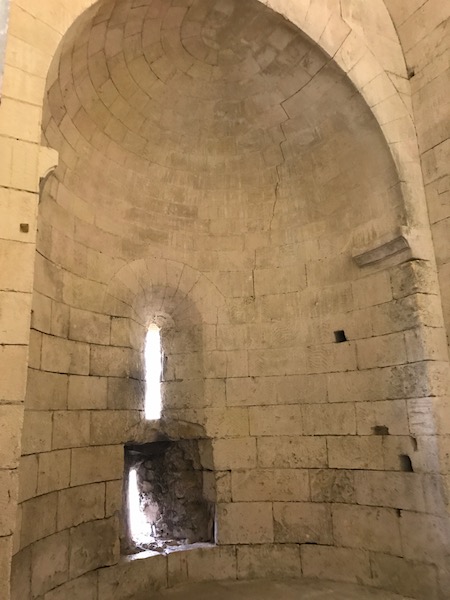


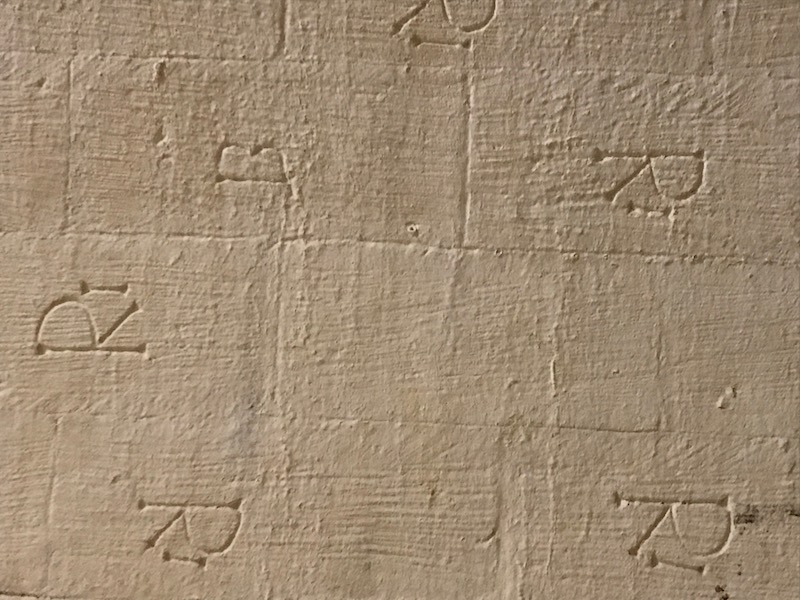
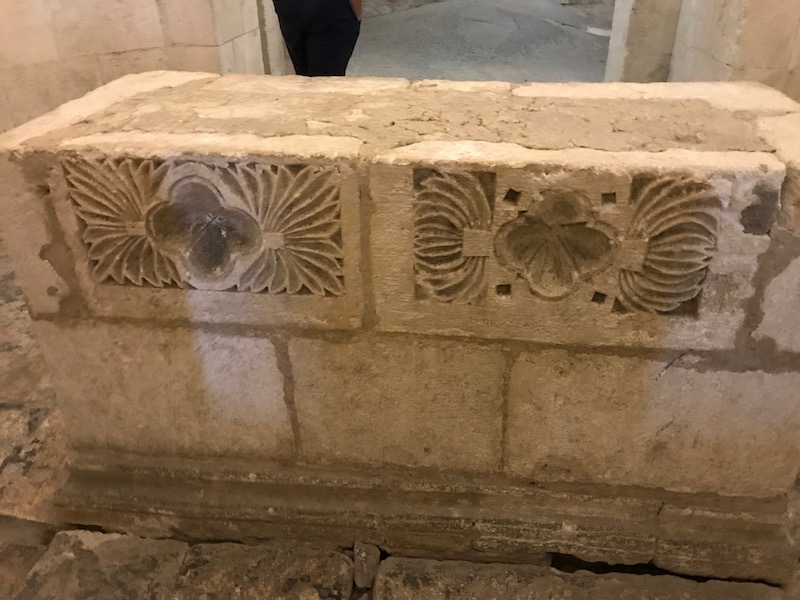

As you leave the crypt, you are then standing within a rock cemetery. There are more than a dozen tombs cut into the rock in the shape of human bodies, with places for the head, shoulders and feet, dating from 11th through 13th centuries. The more recent tombs, from the 14th century, were more rectangular and covered with stone slabs. Most of the tombs are oriented with the feet toward the east, the direction of the sunrise and the Resurrection.

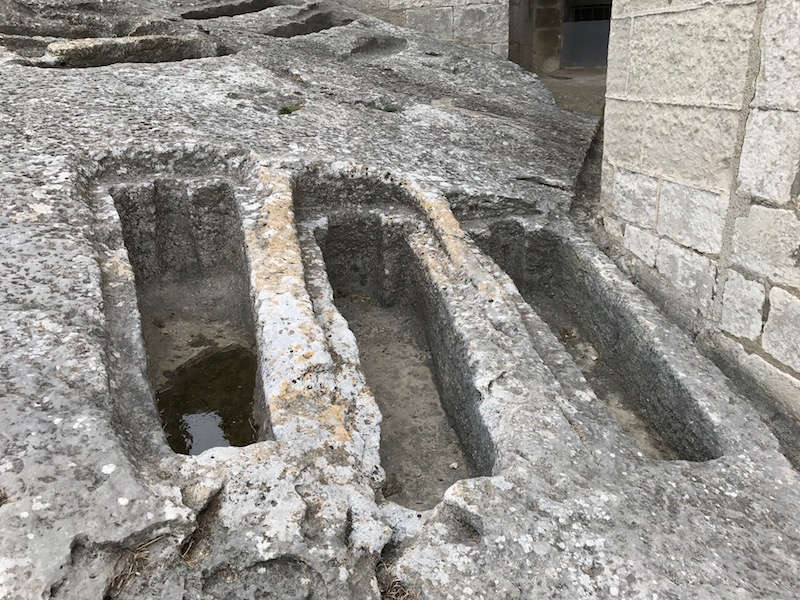
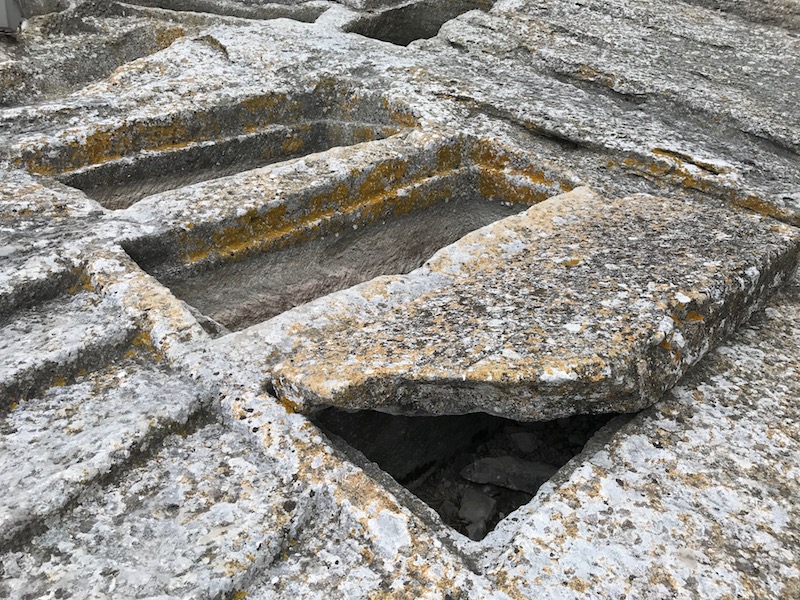
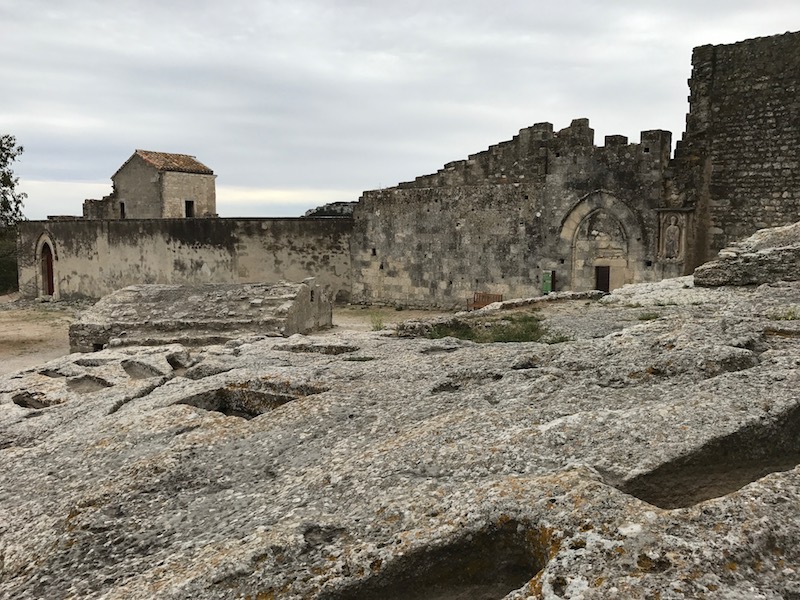
Here are a few more shots, but from a wider angle. You can see how the rock cemetery is literally fitted between all of the various buildings and towers ... or probably more accurately, the buildings and towers were all fitted around this rock cemetery.



The nave was completed in 1153, and is an example of Provencal Romanesque architecture. It is a simple Latin cross layout with a very tall nave.



Along the Northern side, the 14th and 15th century rooms are Gothic style. The Chapel of Notre-Dame-La-Blanche used to house the tomb of the Abbot of Montmajour from 1298 to 1316.

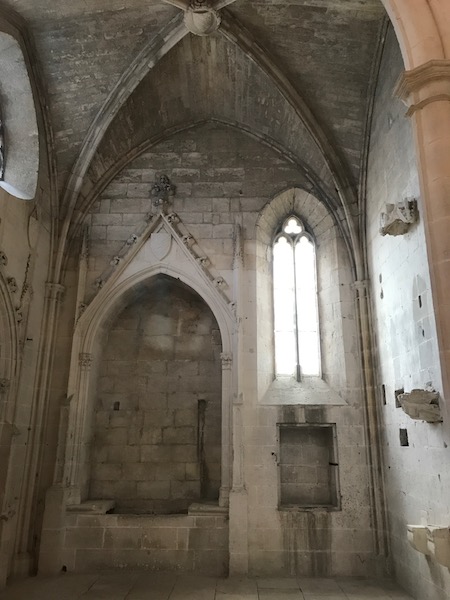

The Cloister, dating from the 12th century, is very typical, with the galleries around the central courtyard. The courtyard contains a cistern that was used to collect rainwater through pipes and channels from the roofs. Each of the various galleries tends to have its' own unique decorations, from real and mythological beasts and foliage in the North Gallery... to wind, moon, sun, and fire in the West Gallery...to realistic donkeys, monkeys, camels, and eagles in the South Gallery.


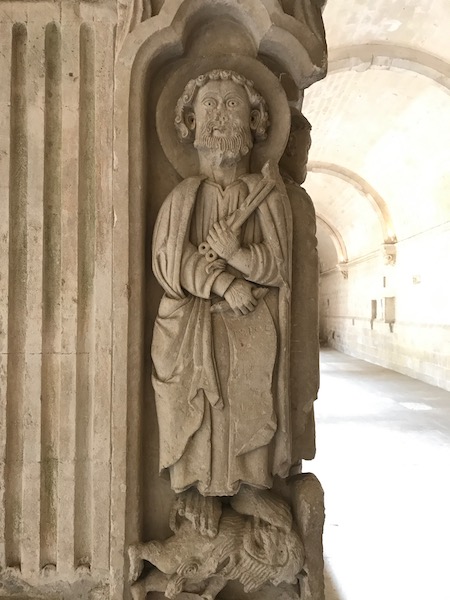




From the cloister, you an get a nice view of the Pons de l'Orme tower, which we'll get to shortly. The second picture just shows the really nice artwork in one of the Romanesque arches.

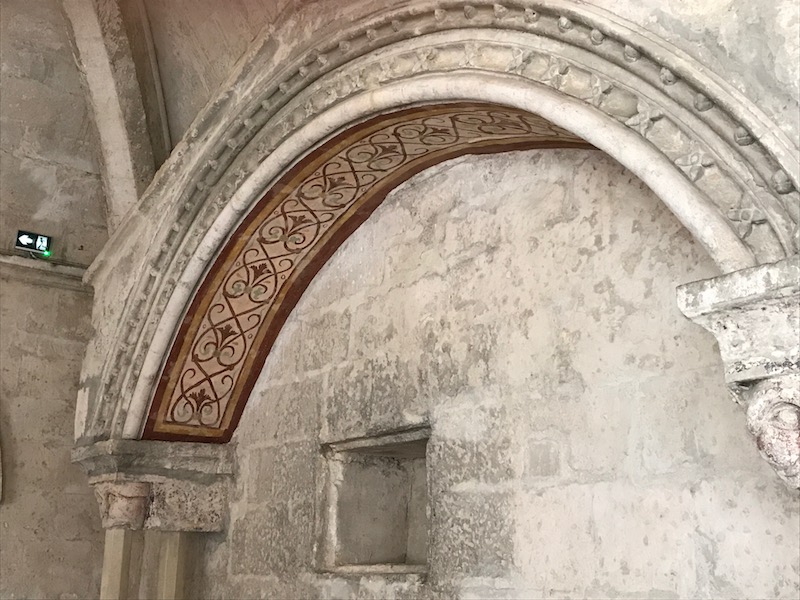
Only part of this spiral staircase, which used to lead to the dormitories, is still there, but you can actually still see how impressive it was that in the 12th and 13th centuries, they were building these spiral staircases.

The monastery is pretty much in ruins here. It was built in the early 1700's and was a Maurist monastery. It was damaged by fire and then rebuilt from 1726-28. Additional building in 1747 and 1776 gave the monastery its definitive shape with 16 bays on the facade. It was supposedly partially restored in 1994 although I didn't see much restoration :-)


From the edge, you can overlook the flat marshlands and then the cliffs of the mountains (or tall hills) in the distance.




The large, castle-looking tower is the Pons de l'Orme tower, which was built in 1373 at the request of the Abbot-Cardinal Pons de l'Orme. It is a fortification/defensive tower that was meant to protect the community which was undergoing the repercussions of the Hundred Years War. It is 26 meters tall and has 4 different levels. Along with just the defensive aspect, it symbolized the power that the abbot had over his domain. To get to the top, you climb 124 stairs, but then you can get a great view as well as being able to see the specific defensive items at the top, like the slits that allowed for bow-and-arrows to be used for defense.


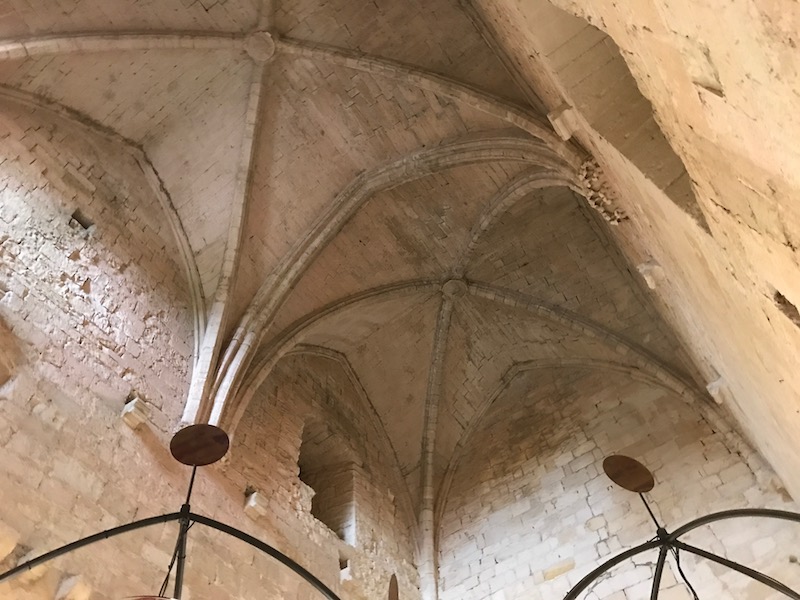

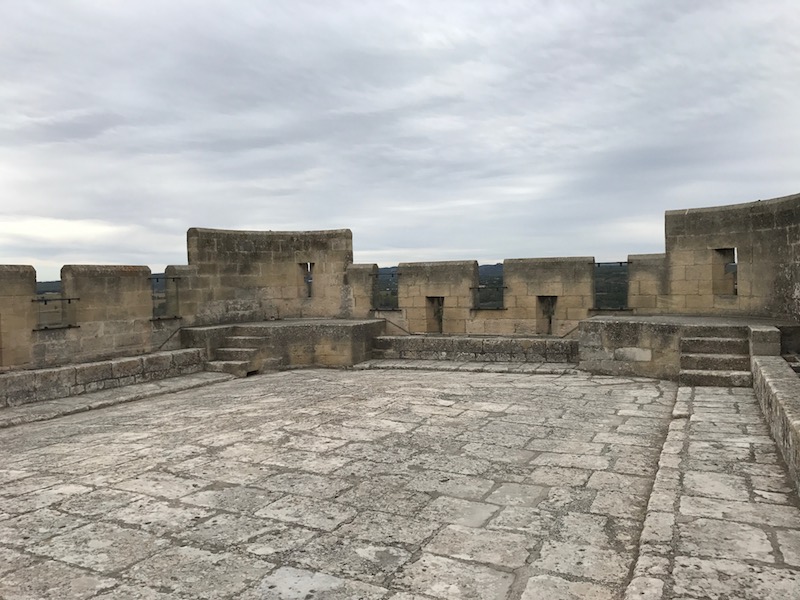
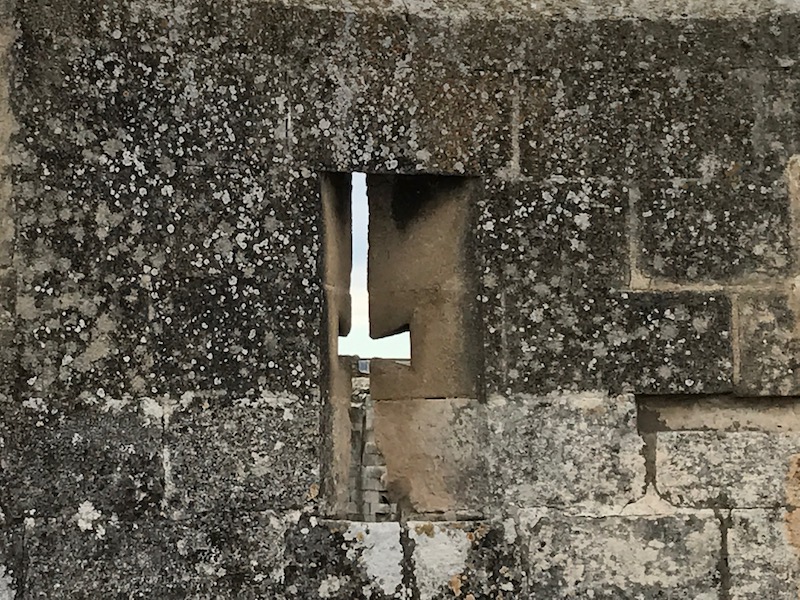
Pictures from the top, where you can see all of the various areas, like the Monastery and Cloister.
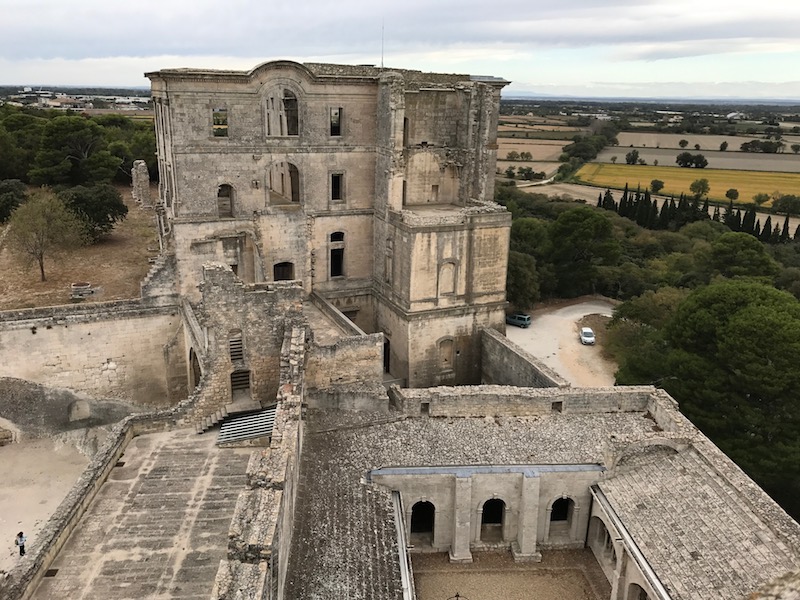


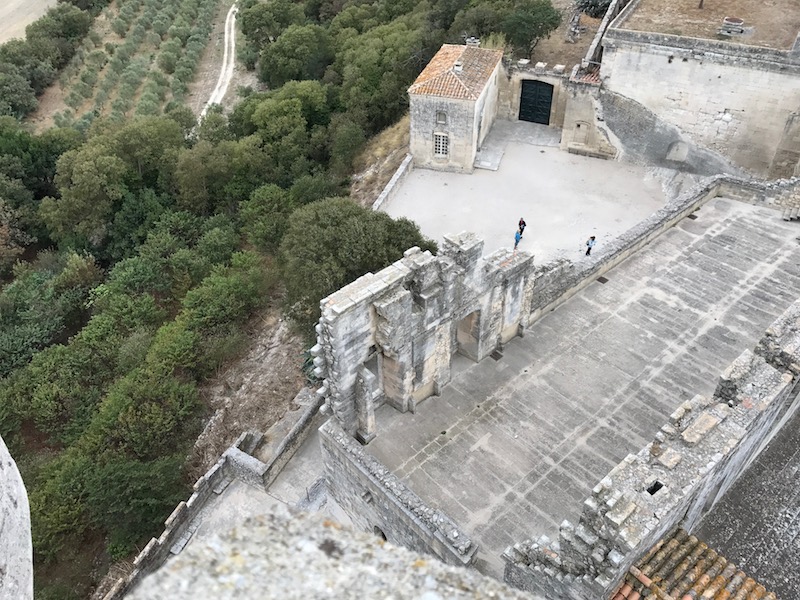



Now that you've seen the real one, here is a model of the Abbey.




St. Peter's Chapel is the oldest existing part of the abbey, probably built between 1030 and 1050. It consists of a entrance area and two parallel naves, the older one cut into the rock on the south side of the hill, and an arcade of rounded Romanesque arches resting on columns, creating openings to the rock cemetery. Part of this is really amazing that they carved this out of the rock.

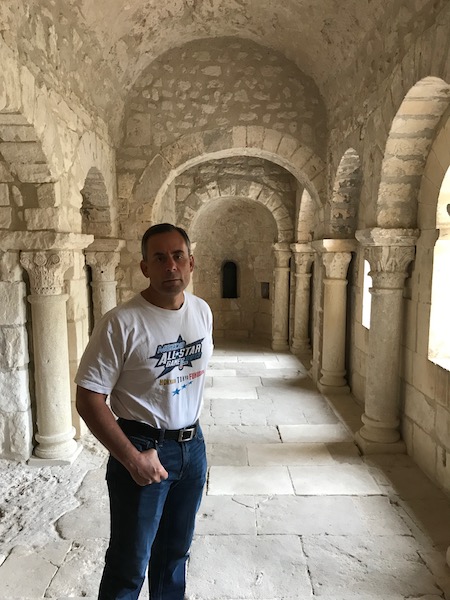




This is the exterior view of St. Peter's Chapel along with an ancient sundial carved into the side.




We then headed through the Camargue on our way to Mouries. It is Western Europe's largest river delta, covering 360 square miles. It is a vast plain comprising large brine lagoons cut off from the sea by sandbars and encircled by reed-covered marshes. These are in turn surrounded by a large cultivated area. Approximately a third of the Camargue is either lakes or marshland. It is very much agricultural, having a specific type of Rice which is grown here, as well as Salt and wine. It is home to more than 400 species of birds and has its own Camargue horses and Camargue cattle. The marshes are also a prime habitat for many species of insects, notably (and notoriously) some of the most ferocious mosquitos to be found anywhere in France.

We got to a point and Tom wanted to turn back and retrace our route back to Arles, since the other option was a Ferry. I opted for the ferry, and (amazingly enough), we timed it almost perfectly! We were the last car on the boat (the Bac de Barcarin), which ferried us across the Rhone.



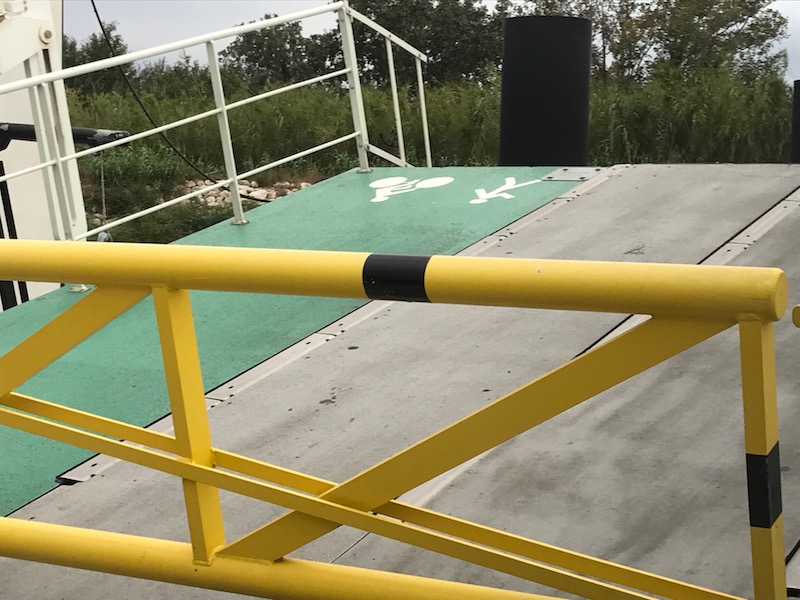


Go to the Olive Festival Day 2 blog